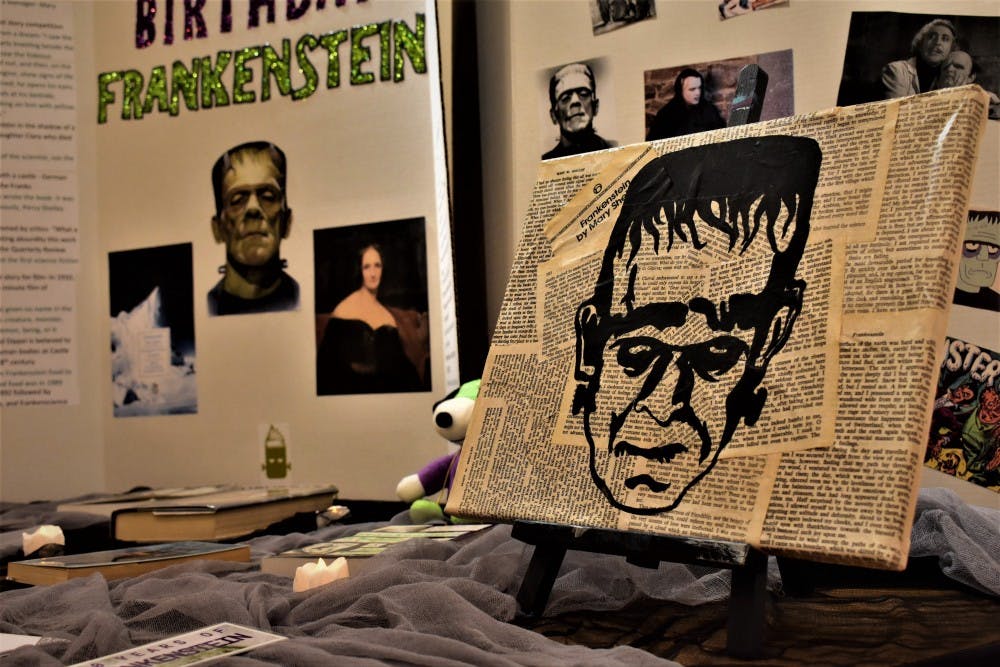English professors discuss their picks for Halloween-themed literature
Dying to find something spooky to read? Central Michigan Life sat down with some English faculty members at Central Michigan University to discuss their favorite scary stories to read around Halloween.
The Haunting of Hill House
English faculty member Joseph Sommers is a huge fan of literature and Halloween, especially when the two are combined.
Sommers has recently been binge-watching the Netflix show “The Haunting of Hill House," which was adapted from Shirley Jackson’s 1959 Gothic novel. The novel — one of Sommers' favorites — is about strange ongoings in an isolated mansion.
For Sommers, the psychological horror aspect is what really gives a scary story its essence.
“What makes a scary story is how it breaks the way we think about things, and twists them in ways we’re not comfortable with,” he said.
The most effective tool for fear is our own minds, and for Sommers, "The Haunting of Hill House" is a perfect example of what he likes about psychological horror.
“It gets into your head and buries in there like a tick," he said. "You start seeing things when you turn off the lights, just as you should."
Netflix’s adaptation of the story is one of the best Sommers has seen, and he highly recommends everyone to both read and watch "The Haunting of Hill House."
The Little Stranger
English faculty member Jeffrey Weinstock teaches courses on Gothic literature and films to observe how monsters, ghosts and vampires are portrayed in popular culture.
Weinstock grew up loving ghost stories, and when he became a professor, he decided to make ghost stories the focus of his research.
“I’m not somebody who actually believes in them, but I like to contemplate their possibility and what that might mean for my own perspective on the universe,” he said.
His fascination with ghosts is part of the reason why "The Little Stranger" by Sarah Waters is one of his favorite scary stories.
The story is set in a 1940s haunted house, occupied by a family who is rebuilding it. Odd things begin to happen, and the family is left wondering if its new home could be haunted by supernatural spirits.
Weinstock believes "The Little Stranger" is remarkably well-written and gives off a Victorian feel, despite being published in 2009.
“It’s a wonderful entry to the Gothic genre, especially for haunted house tales,” he said.
A movie based on the book was released in September, but unfortunately, Weinstock hasn’t been able to see it yet.
Frankenstein
JoEllen DeLucia's curriculum focuses on British literature of the 18th and early 19th century, so it’s not surprising her choice was Mary Shelley’s "Frankenstein; or, The Modern Prometheus."
“It’s a great example of how literature travels through time and stays alive,” DeLucia said.
"Frankenstein" was first conceived by young Mary Shelley as part of a scary story competition with her friends. It was was published 200 years ago in 1818. Colleges all over the world, including CMU, partook in the “FrankenWeek” celebration.
The fictional story centers around a young and ambitious scientist, Victor Frankenstein, who pushes the envelope of life and science to create a living being.
DeLucia said the novel is not only a scary story, but a work of literature, which impacted the way many think about ethics and science.
"The creature that Victor Frankenstein invents has no mother, thus violating our ideas of what a family should look like, while at the same time usurping the power of God,” DeLucia said.
Frankenstein interferes with traditional hierarchies set to teach us how to be human, which is perhaps what makes the tale so unsettling.







